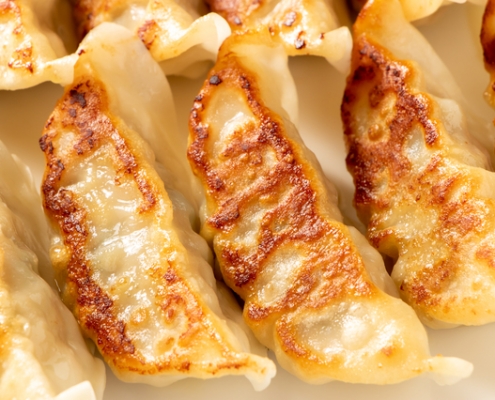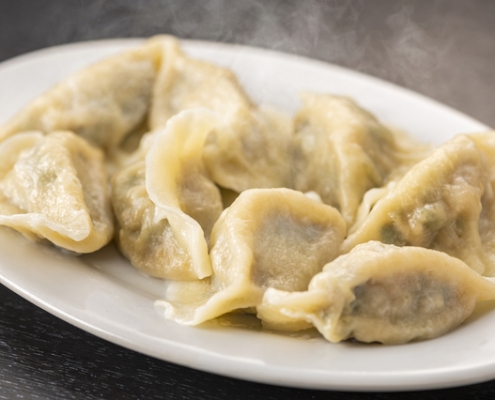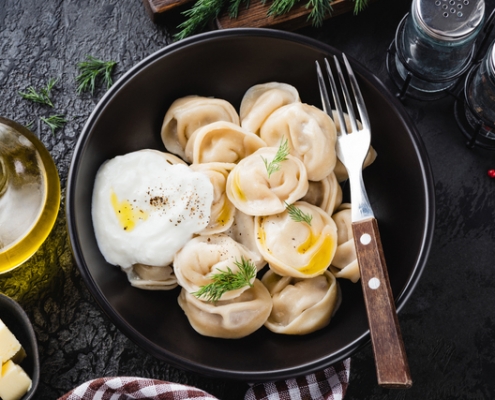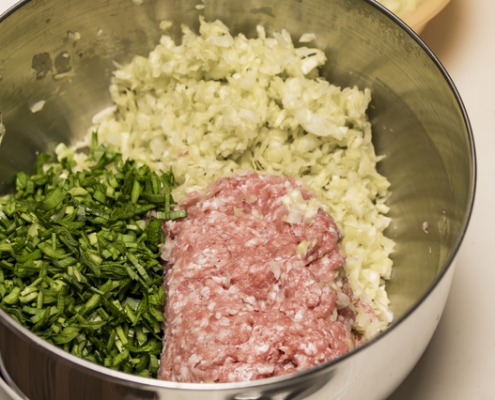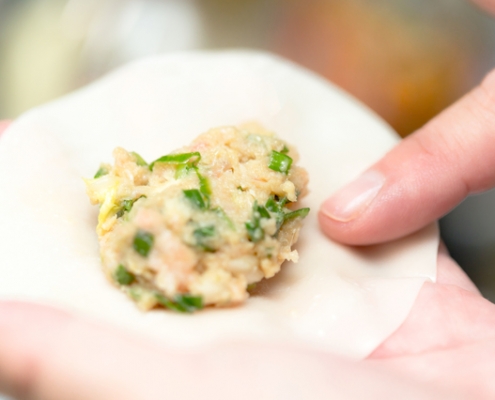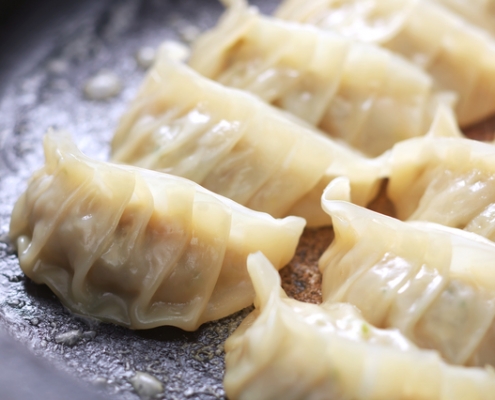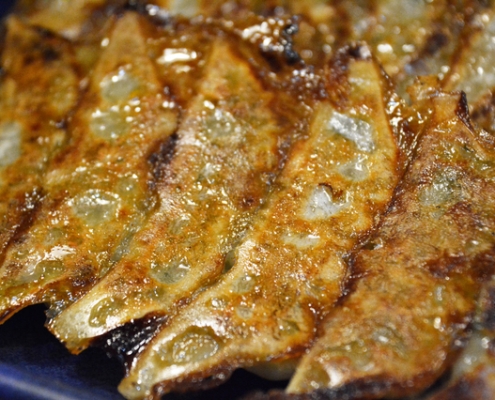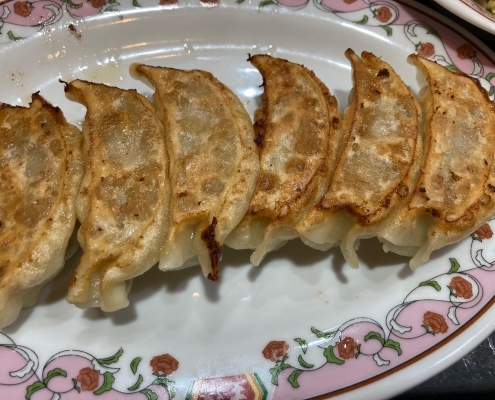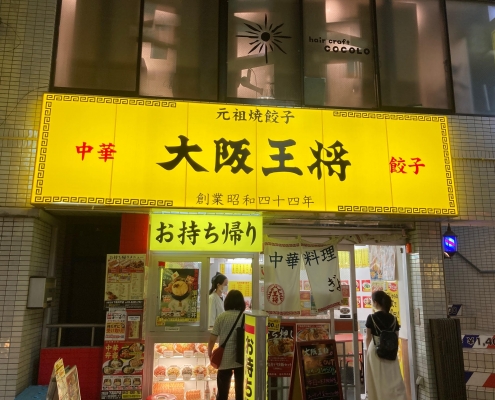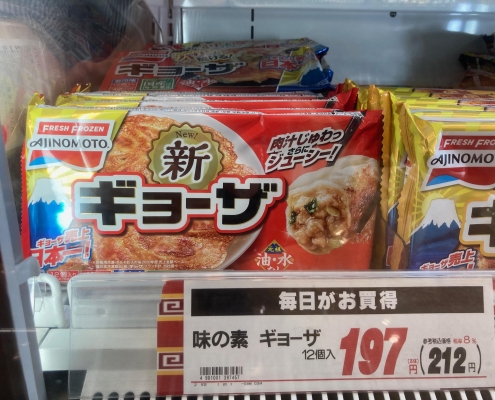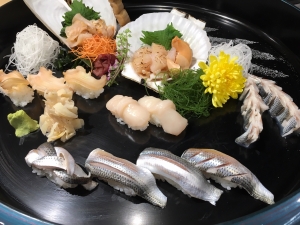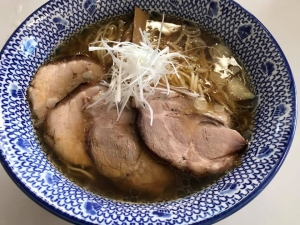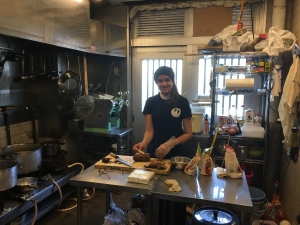All about Yaki-Gyoza, loved by Olympians in Tokyo 2020!
August 24 2021 Updated
The Tokyo Olympics 2020, the first Olympics to be held during a global pandemic, ended in August 2021.
Under normal circumstances, the athletes would have been free to enjoy Japanese cuisine in Tokyo, home to over 150,000 restaurants. However, athletes’ movements were restricted and most of their time was spent in the Olympic Village. Gyoza was one of most popular dishes at the Olympic Village buffet and quickly became a hot topic after athletes posted about it on social media.
The athletes were eating frozen “Ajinomoto Gyoza”, which is sold in ordinary supermarkets. Around 600,000 of these dumplings were delivered to the Olympic Village.
Gyoza is a favorite among Japanese people of all ages. After becoming popular with foreign visitors, new gyoza specialty stores and gyoza bars have been opening up all over Asia and Europe.
Contents
- 1 The Difference Between Gyoza and Chinese Dumplings
- 2 How to make Yaki-Gyoza
- 3 What is Hanetsuki Gyoza?
- 4 What about Gyoza sauce?
- 5 Where are Japan’s Famous Gyoza Towns?
- 6 Which Chain Restaurants in Japan are Known for Gyoza?
- 7 Which Frozen Gyoza are Popular in Japan?
- 8 Where are the Japanese Food Stores in my Country?
The Difference Between Gyoza and Chinese Dumplings
Gyoza originally come from northern China and are made by wrapping meat, vegetables and seasoning in a flour skin and dipping these sui-gyoza (boiled or soup gyoza) or mushi-gyoza (steamed gyoza) in a dipping sauce.
These dumplings are called Jiaozu in Chinese. In English speaking countries, when people think of Chinese dumplings, they usually imagine sui-gyoza (boiled) or mushi-gyoza (steamed).
Japanese gyoza are said to originate with Japanese people who returned from China after World War 2 in the 1940’s and 1950’s. They wanted to recreate the taste of the gyoza they had enjoyed in China.
However, in Japan, yaki-gyoza (fried gyoza) became more popular than sui-gyoza or mushi-gyoza. It evolved in a completely unique way to the original Chinese gyoza, giving us the Japanese gyoza we know today.
Incidentally, outside of China, Nepal and Bhutan have a mushi-gyoza called Momo, in Russia, sui-gyoza is called Pelmeni and Turkey has a sui-gyoza called Manti.
In each of these countries gyoza dumplings are a popular food enjoyed by ordinary people.
Momo in Nepal
Pelmeni in Russia
How to make Yaki-Gyoza
Ingredients
Common ingredients for home-made gyoza are as follows:
* Some families may make their own gyoza wrappers but it’s more common to use pre-made.
Receipes
1) Mix the seasonings together with the ground pork.
2) Add the finely chopped vegetables and after mixing well, leave it to rest in the fridge for about an hour to let the flavors blend.
3) Add a good amount of the mixture to a gyoza wrapper without letting it overflow, then make little folds to close up the gyoza.
4) Heat oil in a fry pan and add the gyoza. When the bottom of the gyoza turns golden brown, add enough water to be able to steam them for a few minutes. Cover and let steam for 4-5 minutes.
5) When the water has evaporated, add a little oil to the pan and cook until crispy.
What is Hanetsuki Gyoza?
When eating at gyoza restaurants in Japan, you’ll often come across gyoza served stuck together in a thin crispy sheet of fried wheat flour.
That thinly fried flour is called hane, and gyoza with that thin layer are called hanetsuki gyoza, which has become highly popular.
Hanetsuki gyoza was created in a gyoza restaurant in Kamata, in downtown Tokyo. With its crisp, thinly fried flour and attractive presentation, this new technique quickly spread throughout Japan.
What about Gyoza sauce?
Vinegar and soy sauce are commonly used, but there are no set rules.
Some people like to add chili oil or mustard, others like to use only vinegar and black pepper.
How Much Does Gyoza Cost in Japan?
In Japan, yaki-gyoza is a very popular dish and the going rate for a single plate with 5-7 pieces is around 200 to 700 JPY (Approx. 1.8 to 6.4USD).
The average food cost percentage in Japan is 30 – 40%, but gyoza is about 20 – 25 %, so it’s known as a low cost item.
264JPY (Approx. 2.4USD) for 6 piece of Yaki-Gyoza @Osho
Where are Japan’s Famous Gyoza Towns?
After the war, Japanese people returning from China brought gyoza back with them. Gyoza has been popular since that time and has become the soul food of Hamamatsu city in Shizuoka Prefecture and Utsunomiya city in Tochigi Prefecture.
Both of these towns are famous for their delicious gyoza and they often face off against each other in a competition called the “gyoza war”, drawing media attention.
Many Japanese people visit these two cities for the sole purpose of eating their amazing gyoza.
If you want to find delicious gyoza in Tokyo, visit Kamata in Ōta ward, near Haneda airport, famous as the birthplace of hanetsuki gyoza. Known as the best gyoza town in Tokyo, it’s packed with about 60 gyoza stores, some of them old Chinese restaurants that still remain today.
Which Chain Restaurants in Japan are Known for Gyoza?
The two most famous gyoza chain restaurants are Gyoza Ohsho and Osaka Ohsho.
As of 2020, Gyoza Ohsho has 737 stores nationwide and one restaurant in Taiwan.
As of 2020, Osaka Ohsho has 352 stores nationwide and also have a presence in Taiwan, Singapore, the Philippines and Indonesia.
At both restaurants you can enjoy a plate of 6 yaki-gyoza for around 250 JPY (Approx. 2.3USD).
Which Frozen Gyoza are Popular in Japan?
Ajinomoto’s frozen gyoza, which were raved about at the Olympics, are also Japan’s favorite frozen gyoza.
There are factories overseas in America, Thailand, Poland and Hong Kong so it’s possible to find this product in Japanese food stores and Japanese food suppliers all over the world.
Where are the Japanese Food Stores in my Country?
To learn more about Japanese food stores in your country, check out this page!
What would you like to know more?

Culinary Schools in Japan
Tokyo Sushi Academy
The first and the most popular sushi school in the world.
Japan Culinary Institute
Japanese culinary training including sushi, kaiseki, yakitori, wagashi and more.
Miyajima Ramen School
More than 1,000 graduates from over 50 countries.
International Ramen School
Ramen study program combined with OJT

